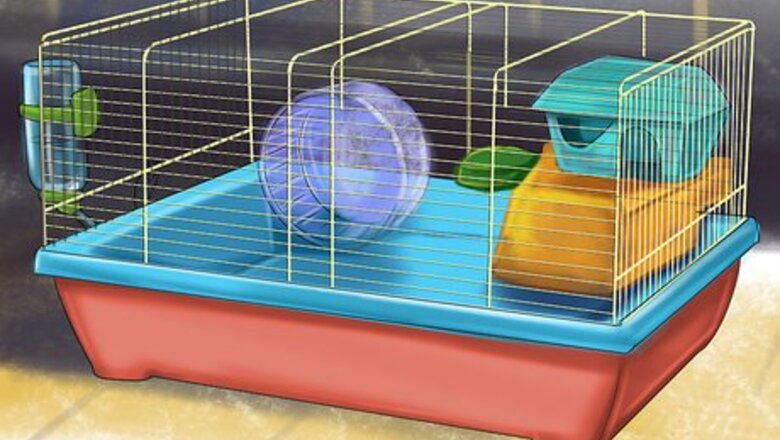
views
X
Research source
Like other small rodents, though, guinea pigs have sensitive respiratory tracts and commonly develop respiratory problems.[2]
X
Research source
Respiratory problems can make guinea pigs very sick. By maintaining a healthy living environment for your guinea pigs and caring for their overall health, you will help your guinea pigs live happy and healthy lives without respiratory problems.
Improving the Cage Environment
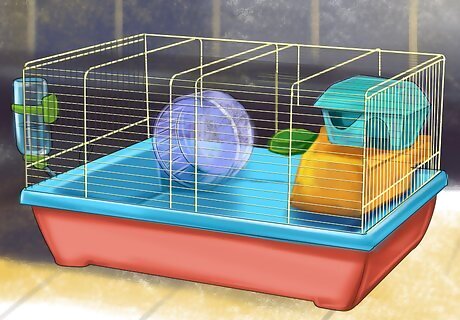
Use a well-ventilated cage. A well-ventilated cage allows fresh air to enter and circulate through the cage. Also, a cage with good ventilation prevents the buildup of ammonia, a compound in urine which can irritate a guinea pig’s respiratory tract. Wire cages provide great ventilation. Cages with solid sides (like a glass terrarium or tall plastic bin) do not.
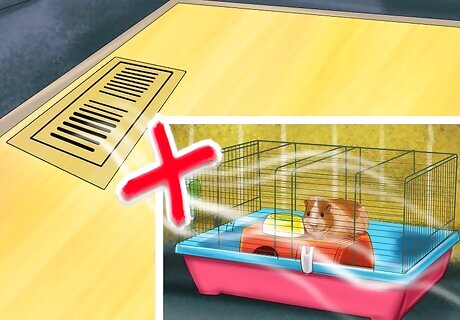
Place the cage in a draft-free area. Proper cage placement is another prevention strategy. Put the cage in an area where your guinea pigs will not feel a constant draft of air, which can make them more susceptible to respiratory issues. For example, place the cage away from the ceiling and floor vents. Make sure the room is well ventilated. Within the draft-free area, make sure the cage is not in the direct path of sunlight.
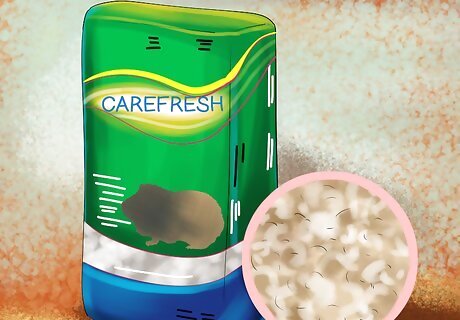
Put low-dust bedding in the cage. Dust can lead to respiratory problems in guinea pigs. CareFresh® is one low-dust bedding. Fleece bedding has no dust at all, so it's also a good choice. If you are not sure if the current bedding is dusty, take some of it in your hand, go outside, and toss it up in the air. If you see lots of dust in the air as the bedding falls to the ground, switch to a low-dust bedding.Prevent Respiratory Problems in Guinea Pigs Step 3.jpg Sawdust shavings contain a lot of dust. Some beddings, such as cedar shavings and pine shavings, contain aromatic (scented) oils called phenols that can cause respiratory tract irritation. They should not be used. If you want to use a wood bedding, look for ones made of other woods (like Aspen). Change bedding at least once a week when it is wet and dirty. In addition to this, spot clean daily.
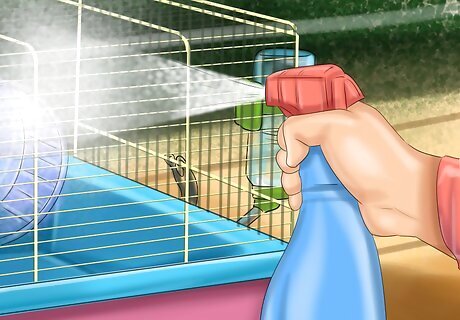
Clean the cage. A clean cage is very important for preventing respiratory problems. First, place your guinea pigs in a guinea-proof room (no hiding spaces or visible electrical cords) or small travel carrier. A laundry basket with some towels in the bottom can also work well if the sides have holes. Next, remove all bedding and accessories from the cage. Clean the cage with warm, soapy water or a 10% vinegar solution (1 part vinegar to 9 parts water) and a sponge. Let the cage dry completely before putting fresh bedding, cage accessories, and your guinea pigs back in. Consider these other helpful cleaning tips: Clean the cage on a regular schedule. Once a week is usually good, depending on the size of the cage. If you tend to forget things like this, make a schedule or mark it on a calendar. Wash the food bowl and water bottle, as well. Make sure they are rinsed or the food/water will taste like soap. If you are using soap, make sure it is unscented and gentle/"baby soap". A soap with extra fragrances or harsh chemicals could irritate your guinea pigs' skin or respiratory tract.
Addressing Potential Housing Problems
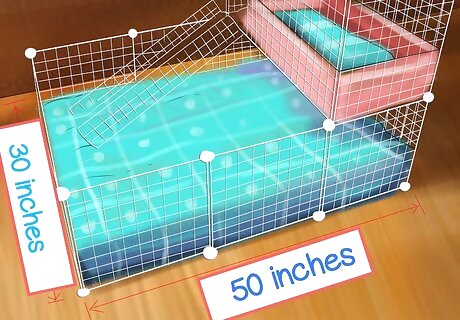
Avoid cage overcrowding. Because guinea pigs are social animals, it is a good idea to house 2 or more guinea pigs together. However, if the cage is too small, the guinea pigs would be overcrowded and stressed. The stress would weaken the immune system and make respiratory problems more likely. To prevent overcrowding, choose a cage large enough for the number of guinea pigs you have: 2 guinea pigs: 10.5 square feet or 30 x 50 inches (76 x 127 cm) 3 guinea pigs: 13 square feet or 30 x 62 inches (76 x 157 cm) 4 guinea pigs: 15.5 square feet or 30 x 76 inches (76 x 193 cm) The cage does not need to be a perfect rectangle. Irregular shapes are fine as long as the total square footage is the same as above.
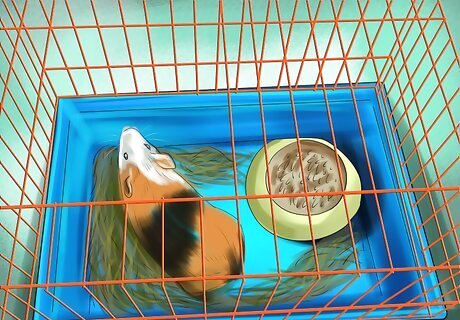
Separate fighting cage mates. Sometimes, guinea pig cage mates do not get along. They may fight or bully each other. This aggression could increase stress levels. If you notice your guinea pigs are not getting along, place them in separate cages.
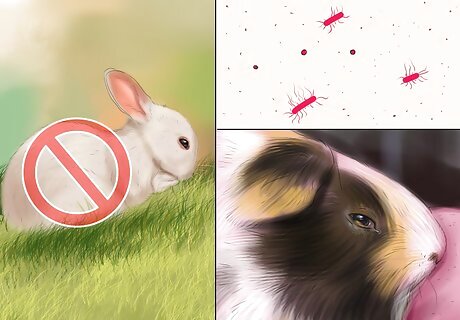
Do not house guinea pigs with rabbits. Rabbits carry a bacteria called Bordetella in their respiratory tracts that they can transmit to guinea pigs. A guinea pig with Bordatella can develop serious respiratory problems. To reduce the risk of Bordatella, keep guinea pigs and rabbits in separate rooms and wash your hands in between handling them. Also, rabbits can accidentally hurt guinea pigs by trying to play but being too rough because of their larger size. Prevent Respiratory Problems in Guinea Pigs Step 7.jpg A rabbit with Bordetella usually doesn’t show signs of respiratory illness. A guinea pig with Bordetella, however, can show many symptoms, including difficulty breathing, discharge from the eyes and nose, loss of appetite, and maybe even sudden death.
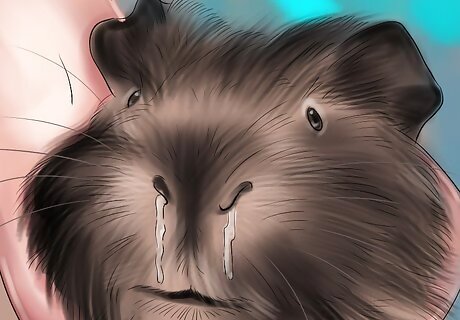
Isolate a sick guinea pig. Respiratory infections are very contagious in guinea pigs. If one of your guinea pigs has a respiratory infection, keep it in a separate cage until it fully recovers. This will prevent your healthy guinea pigs from getting sick.
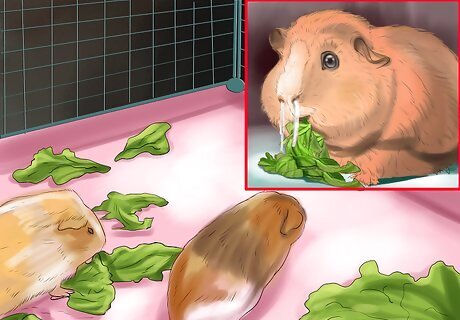
Quarantine a new guinea pig. If you have purchased a new guinea pig, keep it separate from your other guinea pigs for 2 weeks. Put the new guinea pig in its cage in a different room and do not let it interact with the other guinea pigs. During these 2 weeks, make sure the new guinea is eating and drinking normally and looks healthy. This is especially important if your guinea pig is from a pet store. These are notorious for selling sick guinea pigs. If the new guinea is showing any signs of respiratory problems (e.g., sneezing, discharge from the eyes and nose), take it to your vet for treatment. To prevent the spread of illness between the new and current guinea pigs, wash your hands between handling each one. After the quarantine, introduce the guinea pigs gradually. First, put their cages next to each other so they can smell each other. Then, introduce them face to face. Select a neutral area, such as a large play area, to make the face-to-face introductions. A gradual introduction can prevent respiratory problems by reducing the stress of introducing a new guinea pig to the home.
Using Other Prevention Strategies

Include Vitamin C in your guinea pig’s diet. Vitamin C is an important nutrient for guinea pigs. Guinea pigs cannot produce vitamin C in their bodies, so they must obtain it through their diet. Feed your guinea pigs vitamin C-rich foods like oranges, broccoli, and leafy greens (e.g., kale, parsley, spinach). You can also feed them Vitamin C-fortified pellets. Vitamin C in pellets can break down quickly. Check the milling date (processing date) on the package. Feed the pellets within 90 days of the milling date to ensure your guinea pigs get enough vitamin C from the pellets. Do not put vitamin C drops in your guinea pigs' water bottle. The drops make the water taste funny, which can stop your guinea pigs from drinking altogether, and the vitamin C breaks down within an hour. A healthy guinea pig needs 10-30 mg of vitamin C per day for every kilogram (about 2.25 pounds) of body weight. Sick, young, and pregnant guinea pigs need more. Without enough vitamin C, a guinea pig’s immune system can be weakened.
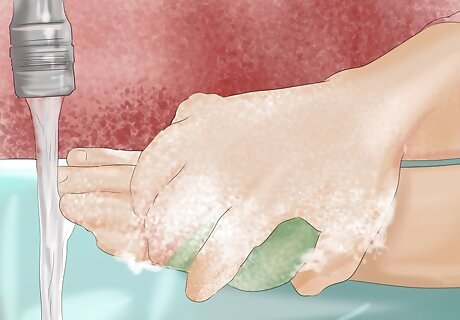
Wash your hands. Your good hygiene can prevent respiratory problems in guinea pigs. If you have multiple guinea pigs living separately, wash your hands between handling each one. This is especially important if one of your guinea pigs is sick.
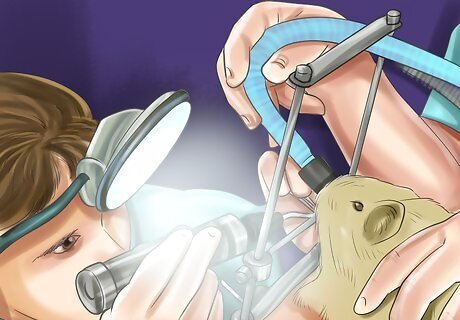
Have your vet correct dental problems. Dental problems can lead to respiratory problems in guinea pigs. For example, the tooth roots (located above the gum line) of a guinea pig’s cheek teeth are fairly close to the nasal airways. If these roots get pushed upward because of another dental problem, a guinea pig could develop respiratory problems, like a sinus infection. Dental problems require veterinary treatment, such as surgery and antibiotics.

















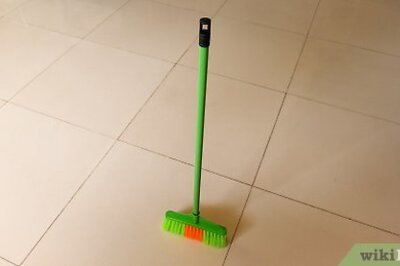


Comments
0 comment